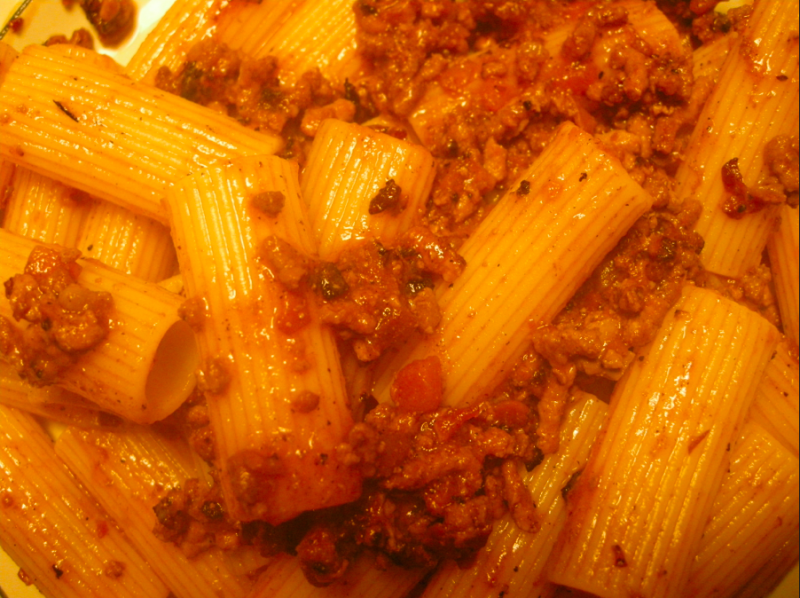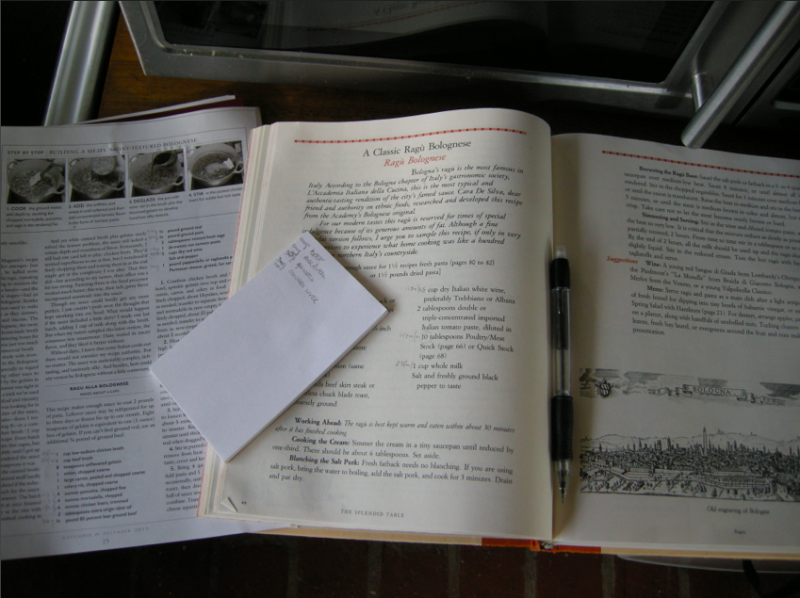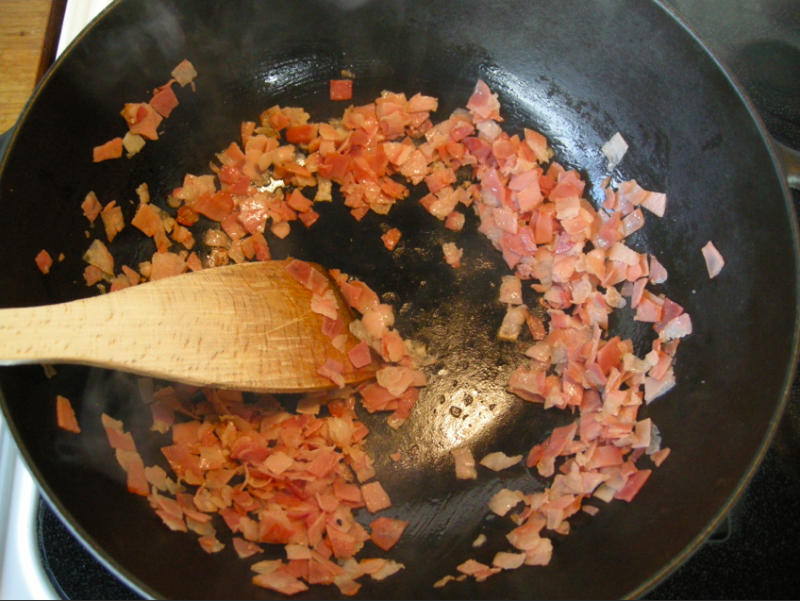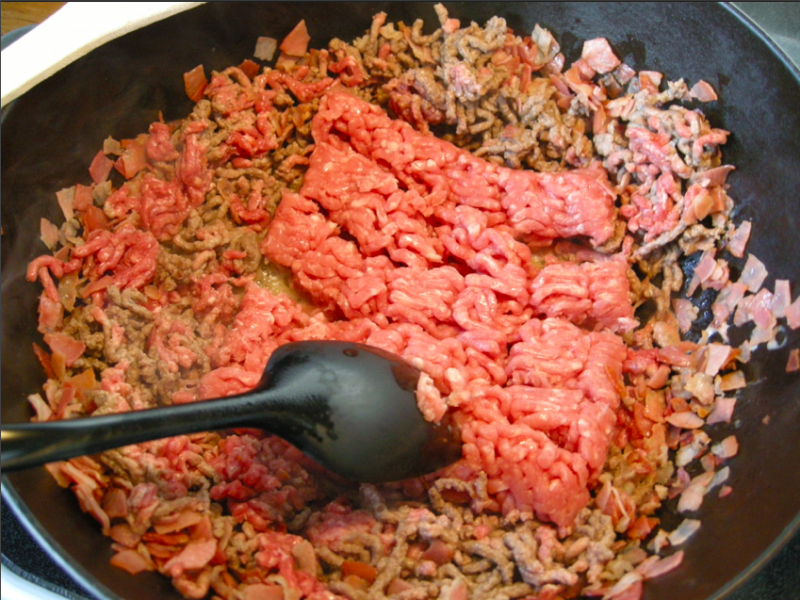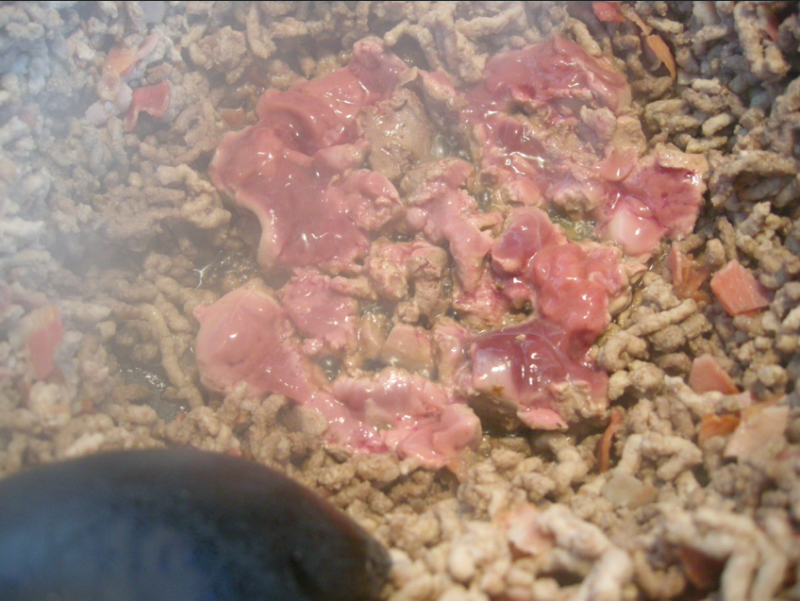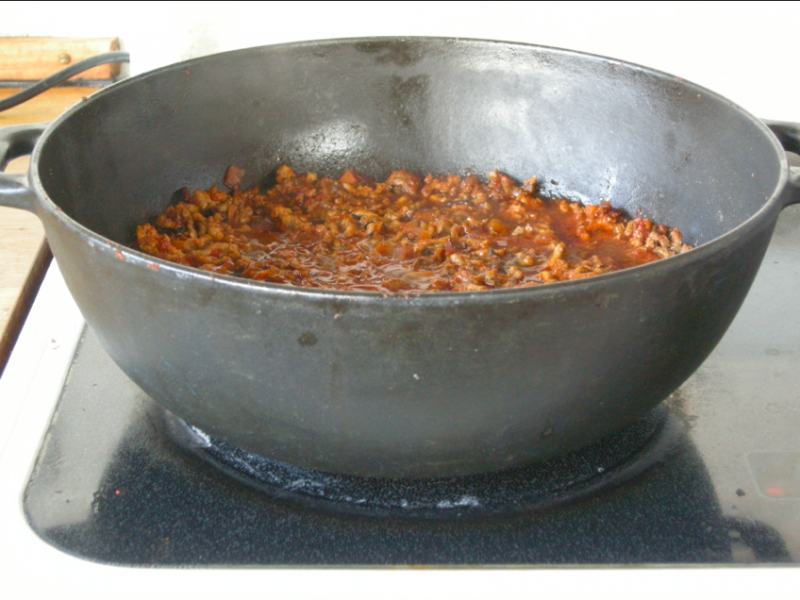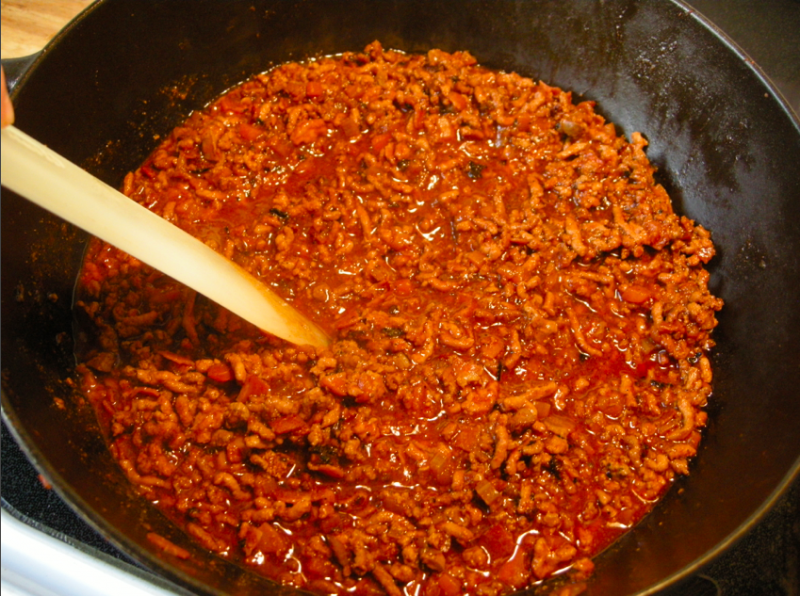-
Posts
7,657 -
Joined
Content Type
Profiles
Forums
Store
Help Articles
Everything posted by Mjx
-
How did you do it? I'm always interested in different techniques.
-
I think this is more or less standard..? I'm not sure how else I'd do it.
-
I cut the vegetables into pieces that would more or less ft into a 2cm cube, toss them in olive oil, pepper, and a little salt, then roast them in a single layer, first under foil until the hardest of them may be pierced with a fork, then at high temperature with the foil removed (I can't take credit for this, beautifully as it works: it's one of the techniques CI gives for roasting potatoes). Some of the vegetables do take longer, but the ones that cook more quickly don't seem to suffer from being cooked longer than absolutely necessary, which is one of the nice things about root vegetables.
-
I'd explain the situation, and they may be very understanding. If they're difficult about things, tell them you'll be there, but would like to remind them that wiping up vomit is not the joy of the average waiter's life, nor do violent stomach upsets tend to add to pleasure of other diners. If the restaurant chooses to reschedule/cancel your reservation, they can't charge you for that.
-
As others have pointed out, just letting things go may be the happiest solution. Which dishes/types of dishes were you particularly concerned about, and how strictly traditional are your family's expectations likely to be? Often, if there's turkey squatting at the centre of everything else, a good fifty percent of people feel that things are 'right', but this does vary.
-
Has anyone else had any difficulty finding some form of salt cod where they live? In Denmark, it had a long tradition (and is called klipfisk), but asking where to find it has so far drawn alarmed/amused looks, as though I'd shoved a heaping tablespoonful of hákarl the person's face, rather than asked a question (usually, an elaboration of its appalling smell, etc. follows).
-
The ragù bolognese, over pasta: We couldn't find pappardelle – hard to find where we live, for some reason – but my boyfriend was really happy with the way the sauce worked with rigatoni (I had mine over rice – not a great texture combination – because my joints were playing up too much for me to risk eating wheat-based pasta, and I couldn't find any remotely decent rice-based pasta). I'm really happy with the addition of the gelatine, and my two recipe sources in general: I definitely recommend them both. I discovered earlier today that I'd flaked and forgotten about a quarter of the pancetta, when I put it in the refrigerator to re-chill, since it was getting difficult to chop up, which probably explains why I needed to add some fat when I sautéed the vegetable. Might instead deserve to be honoured by being called a game ragù Mine definitely improved over a 24-hour period, became more balanced. I really like the way strongly-flavoured things develop over a little time, as compared to when they're first finished. Yesterday, the ragù I made had an aggressive liver note that was gone today, and no one ingredient leapt out and dominated; the flavour was very rich and seamless.
-
Specifically, in Italian 'sugo' means juice. Incidentally, dairy is by no means a 'must' in ragù bolognese: There are plenty of food historians/bolognesi who are as vehement about not using milk, cream, or either, as insist that it is key! If you speak even a little italian, do an online search for something like [ragù bolognese latte crema sì o no?], and enjoy the flying fur
-
Heh, I misunderstood that as your having added them to the sauce No, I fudged on the liver to meat ratio in the classic recipe I used. I only used about 3 chicken livers, sauteed in butter but left rare, then minced and put into the meat mixture. I thought that looked less less than half a pound of livers!
-
I'm also curious as to what brand/kind of orecchiette you're using, since I've never had any special problems with this shape; I might just have been lucky in the brands I've used.
-
That is a delicious-sounding combination, and I thought it was interesting that you too found the liver very mild, since my sauce smells so livery to me (making things more confusing, my boyfriend isn't getting this note at all, although he has a far better sense of smell than I do, most of the time). I simmered my sauce until the last of the litre (about a quart) of broth I added was reduced, which came to about 3 hours and a quarter. I guess you could simmer it covered after that, but my experience is that it is one of those things that improves each time you reheat it, sort of like pinto beans.
-
The liver in my Bolognese was very subtle. However, I put a lot of chicken liver in the meat sauce I use for Canneloni and Lasagna. It adds the unctuous creaminess when combined with the besciamella and tomato sauce I used in those dishes. Did you use the 1 lb ground meat to 1/2 lb chicken livers (2:1 ratio) of the recipe you mentioned ? I used about 31.7 oz ground meat to about 5.3 oz chicken liver (roughly, 6:1 ratio), and I'm finding the liver's presence pretty assertive... and I like liver. I'm trying to figure out what's goingon, here.
-
It's what was on hand. My boyfriend was sweet enough to do the shopping for this (I was racing to meet a deadline), so I made the list as loose and flexible as possible, so I'd have some form of everything I needed. Incidentally, the clove is apparently only noticeable if you're told about it, and sniff for it; the predominant note is liver, which I haven't decided whether or not I like.
-
This time, I decided to combine Rossetto Kasper's presentation of the traditional recipe in The Splendid Table with some of the ideas from Cook's Illustrated's interpretation (which involves chicken liver and gelatine), along with my own logic at any given moment (the last broke down in several places). Raw ingredients, in order of appearance in the pot: 210g pancetta (7.4 oz), 400g beef (14.1 oz), 500g pork and veal blend (17.6 oz), 150g chicken livers (5.3 oz), a clove, a large carrot, a celery stalk, a medium onion, 70g tomato paste (2.5 oz), 250mL white wine (about a cup), 1L chicken stock (a little under a quart; reduced last night from 2L). I'm doing this in my boyfriend's parents' kitchen (we're staying with them while we're house hunting), so I knew this would alter my usual approach. I'd originally planned on unpacking the 30cm, straight-sided, deep stainless skillet I normally use, then realized it is much too large for even the largest burner on the stove, so went with a heavy cast iron pot, instead; the only other choice that was even close to large enough was a skillet that was way too shallow to contain the ingredients. I wanted to work with the fat in the meat, adding as little extra as possible, so I decided to start by sautéing the pancetta Then I added the beef, and pork and veal mix. Because the pot is very curved, and has a relatively small base, the fluid from the meat accumulated over a quite small area, throwing off clouds of steam (also made taking pictures a little challenging). I didn't want to steam/boil the meat before it browned, so I pushed the meat to the sides of the pot, and cooked off the liquid, until only fat remained, then, in the clear space at the centre, I sautéed the livers, which I then mashed up with a fork. I stirred the meat together. It was at this point that I realized that unless I was willing to give it a very long time with constant vigilance over a fairly high heat, it was never going to really brown, because relatively little of the volume was in contact with the pot at any given time, and very little of the pot was in contact with the heat. At this point, my boyfriend's father began his daily trumpet practice. He decided that he would not practice in the kitchen as usual, and moved to another room, but my boyfriend's mother stayed in the kitchen and sang along, so I wouldn't miss out. I pushed the meat to the sides of the pot again, saw there was very little fat, added a little olive oil, and then added the carrot, celery, and onion. As I did this, I realized it was an idiotic and lazy move: Naturally, as I began stirring the vegetables, the meat continuously crowded them, and tumbled in amongst them. I carried on regardless, since there seemed to be no other reasonable option at that point. My boyfriend wandered into the kitchen, grinned, and asked whether there was anything he could do; I demanded port. I continued mucking about with the sauté until the onions looked translucent, then tumbled everything together. My boyfriend returned with the port, which I drank while staring at the anaemic-looking mass in the pot. At this point, I decided to take heart from the fact that peposo (where raw beef is simply boiled for hours with tomatoes and water) comes out just fine, even in the absence of any browning: I'd just start adding the liquid, and hope for the best. I added about 70g tomato paste, 250mL of wine, and 375mL broth (Time=12.12). I continued adding enough broth to just be visible at the surface of the meat, at roughly half-hour intervals. According to the discussion in Cook's Illustrated, dumping all the broth in at one go works just as well as adding it at intervals, but I was using a litre of of broth, rather than 2 cups, which I felt would make a difference. A little over three hours later, all the broth had been added, and the liquid was reduced to the point that, if I was planning on adding gelatine I should probably do it now. I scooped through it and decided that a bit more cohesiveness mightn't hurt, so I added 17g of gelatine, about half the amount recommended in the Cook's Illustrated version, but given the presence of two litres of reduced broth, it seemed a safe decision. I also added a large pinch of nutmeg and a about 23 grinds of coarsely-ground black pepper, because the distinct livery/gaminess seemed to call for a something to balance it out. Time=15.33: The ragu is meaty, unctuous, and too intense to eat straight, which I find usual for this sauce. No picture of this over pasta, because I've been asked to make salmon for dinner tonight (not entirely pleasing to my boyfriend, who wanted to know why he'd been left out of this decision), but I'll add that as soon as it happens.
-
Dishes always evolve, but, beyond a certain point they become something else, so they outgrow the original name. But rather than think in terms of feeling obligated to call it a name that says it's almost-but-not-quite bolognese, it makes sense to think in terms of one now having the privilege of calling it something else, say, 'ragù Ross' My bolognese is simmering away the last of the broth. It smells distinctly livery (I used chicken livers), which makes the clove and bay leaf more important, I think. I'm still pondering the use of gelatin.
-
I find the sauce so intense, it is difficult for me to perceive it as bland, and I wonder whether the 'blank slate' aspect of the seasoning doesn't also simply tempt people to play with that aspect of it. I mentioned upthread that for me, this is a very medieval-feeling sauce, and accordingly, a clove and a bay leaf find their way in. Their presence is unobtrusive, but seems to mesh nicely with a certain gamey quality of bolognese. Sounds to me like another version of using a sweet note in a dish involving game. Haven't seen this particular version before, but sweet preserves often show up, and also grape must. Unless the quantity of cream exceeds that traditionally used, it doesn't make the sauce creamy, because it (and the milk) is cooked down for so long. That said, I find versions with cream a bit... dull, but this may be at least partly attributable that to the fact that I find the concept of dairy in a savoury dish really, really off-putting (and, since the traditional arguments against using dairy in bolognese are as strong as those for it, I won't be using any when I make the sauce a little later today).
-
The recipe with ginger may need tweaking to suit your husband's taste, but the basic idea sounds very good; spices always seem to work really nicely with nuts. Fruit flavourings (as in extracts or juices), not much, although small pieces (i.e. not larger than the nut pieces) of dried fruit can be really good. Or maybe well-crushed coffee beans or cacao nibs?
-
Never heard of sugar bloom, does it look very different from fat bloom? And, given that chocolate has no water (since the fluid phase of it is a far), it doesn't seem likely that it could absorb any, unless the fat migrates out, leaving the solids better able to pick up; is this it, or is there some other mechanism? From a physical/chemical standpoint, I can't figure it any other way, and the only chocolate I've ever had play up on me (in a way that sounds similar to this) was thin, and very heavily bloomed, and stored in a nice warm cabinet over the oven (I've only once had a damp kitchen, but quite a few that had not a single cool corner).
-
End grain boards look really nice, but Cook's Illustrated's test a few months back demonstrated that they went to hell pretty quickly; if you're planning on replacing them fairly often, however, that wouldn't matter.
-
My question now is, if you were say, going to stay with a friend who happened to have no cookbooks or ability to cook (but did have an appreciation of good food), so you were going to bring a cookbook of your own--only one--and do any cooking, would The Family Meal: Home cooking with Ferran Adrià be one you'd consider bringing? I realize the situation I've described is absurdly contrived (if no weirder than some I've found myself in), which is the reason I'm saying 'one you'd consider', not 'the only/first one I'd choose'
-
Fair enough, and as you point out, it's a very personal thing. I don't have a dozen cookbooks, and the ones I have are either very old, or incredibly reliable. Also, I travel/move often, and my books are some of the few things with which I'm unwilling to part, so my selection process is necessarily stringent. I'm fine with prepared things (I don't think I've ever even made my own ice cream), but I find that knowing something about how to make them makes it far easier to make chices I'm happy with.
-
It sounds good, and very likely something that might be done, but might not be called a bolognese sauce in Italy; at the very least, one person calling it that would kick off an involved and extended discussion of what defines a bolognese sauce, and what puts it beyond the margins of the name (I've heard plenty of such discussions, the most recent having revolved around how the addition of onion to, I think, carbonara, made it something else, and could not be called 'carbonara'... no maybe, or alternative, just 'not'!).
-
Since the tomato paste is added along the way, instead of being there from the start, it would require doing separately and I'm not sure that the relative quantity involved would make this worth it.
-
Mette's tiramisù had me craving it, so I made one. This is the unchaste version, with cream and alcohol (I'm slipping, though, because my boyfriend noted I could have used significantly more booze).
-
I agree, pellets are fine. But heat makes as much difference as moisture (storing cool and dry is crucial), particularly when you have pellets, because their surface to volume ratio means that if they get warm, a relatively large percentage of the cacao butter (i.e. the fraction of the chocolate that makes it melt nicely) can bloom out, so when you try to melt, you're likely to get an oily puddle with a clump of sludge. Moisture that is present on the exterior of the chocolate is more manageable (as you know, if you've ever made a water ganache), although moisture that is present in the interior (might happen if a lot of the fat bloomed, leaving the chocolate below the surface lower in fat, and better able to absorb moisture) might cause the chocolate to sieze.



